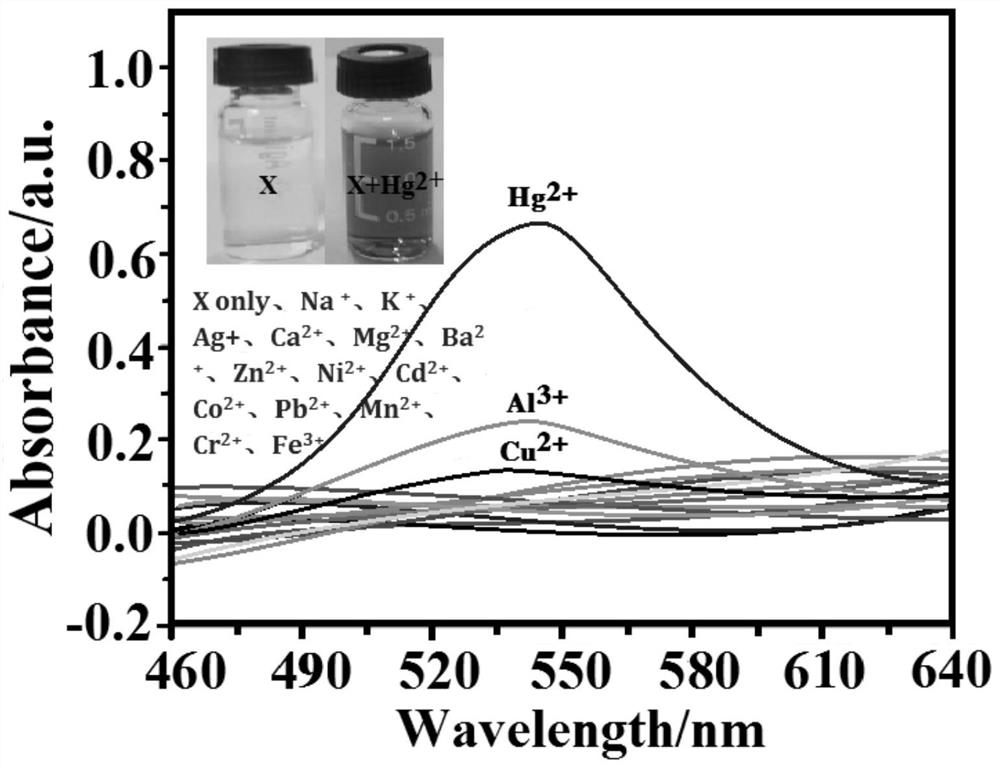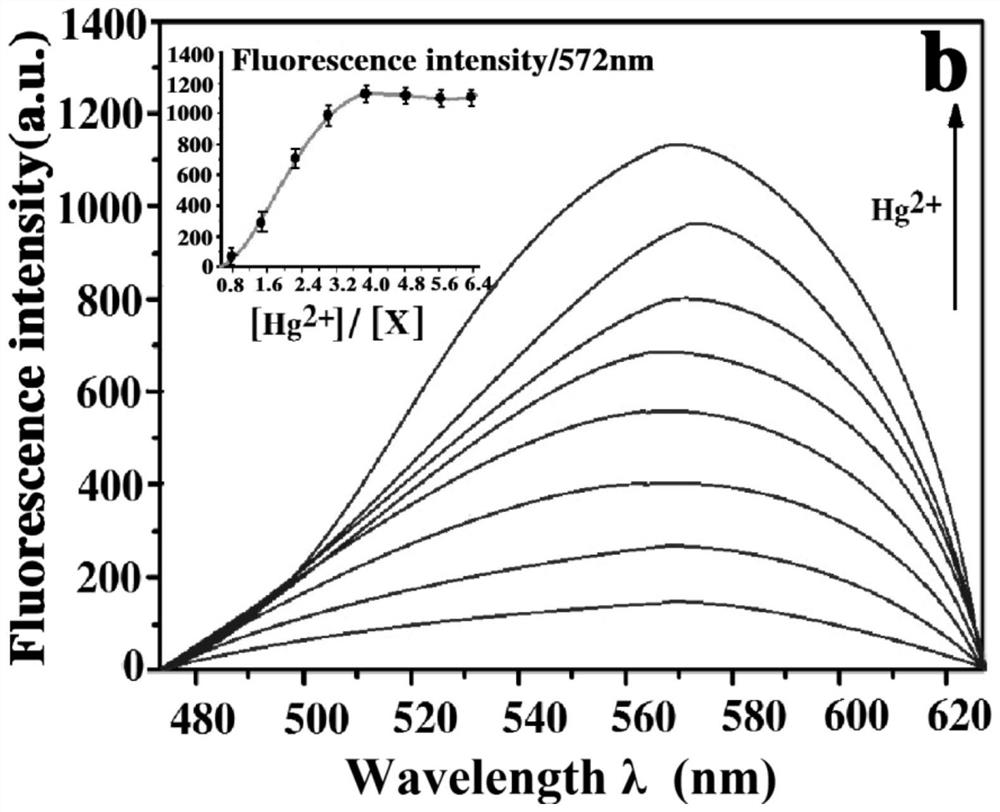Rhodamine B derivative fluorescent probe molecule based on monodisperse four-arm polyethylene glycol and preparation method of rhodamine B derivative fluorescent probe molecule
A four-arm polyethylene glycol, fluorescent probe technology, applied in the field of detection, can solve the problems of low total yield, affect practicability, slow development of mercury ion fluorescent probes, etc., and achieve the effect of low concentration detection limit
- Summary
- Abstract
- Description
- Claims
- Application Information
AI Technical Summary
Problems solved by technology
Method used
Image
Examples
preparation example Construction
[0061] The preparation of embodiment 1 formula III compound
[0062] Under the protection of argon, dodecaethylene glycol (HO-PEG 12 -OH)I (140.5g, 0.25mol) and tetrahydrofuran (200ml) were added into a 500ml round bottom flask, and cooled to about 0°C under ice bath conditions. Sodium hydride (60% dispersed in mineral oil, 2.4 g) was slowly added to the reaction system in three batches. The reaction mixture was warmed to room temperature, followed by the addition of N by syringe 3 -PEG 4 - A solution of Tos (14.92 g) in tetrahydrofuran (10 ml). The reaction was further stirred for 48 h under an argon atmosphere. After the reaction was monitored by TLC, 200 ml of brine was slowly added to the reaction to quench excess sodium hydride. The organic solvent was removed by distillation under reduced pressure. The crude product was washed three times with dichloromethane (400ml×3), and the organic phase was collected. The organic phase was washed successively with 50 wt % aqu...
Embodiment 2
[0064] The preparation of embodiment 2 formula V compound
[0065] Under the protection of argon, the HO-PEG 16 -N 3 (III) (10g, 13.4mmol) and tetrahydrofuran (200ml) were added into a 500ml round bottom flask, and the reaction solution was cooled to about 0°C under ice bath conditions. Sodium hydride (60% mass fraction dispersed in mineral oil, 1.2 g, 30 mmol) was slowly added to the reaction system in three batches for 30 minutes. The reaction mixture was heated to 40 °C, and the HO-PEG 4 - A solution of Tos(IV) (13.92 g, 40 mmol) in dry tetrahydrofuran (20 ml) was slowly added to the reaction system, and the dropwise addition process continued for 2 hours. The reaction mixture was further stirred for 24 h under argon atmosphere. After the reaction, 200 ml of brine was added to quench the excess sodium hydride, and the organic solvent was evaporated under reduced pressure. The slurry crude product was extracted three times with dichloromethane (200ml×3), the organic ext...
Embodiment 3
[0067] The preparation of embodiment 3 formula VI compound
[0068] Under the protection of argon, the HO-PEG 20 -N 3 (V) (8g, 8.67mmol) and tetrahydrofuran (100ml) were added into a 250ml round bottom flask, and cooled to about 0°C under ice bath conditions. Sodium hydride (60% mass fraction dispersed in mineral oil, 0.8 g, 20 mmol) was slowly added to the reaction system in three batches for 30 minutes. The reaction mixture was heated to 40 °C, and the HO-PEG 4 - A solution of Tos(IV) (8.35 g, 24 mmol) in dry tetrahydrofuran (20 ml) was slowly added to the reaction system, and the dropwise addition process continued for 2 hours. The reaction mixture was further stirred for 24 h under argon atmosphere. After the reaction, 200 ml of brine was added to quench the excess sodium hydride, and the organic solvent was evaporated under reduced pressure. The slurry crude product was extracted three times with dichloromethane (200ml×3), the organic extracts were collected and comb...
PUM
 Login to View More
Login to View More Abstract
Description
Claims
Application Information
 Login to View More
Login to View More - Generate Ideas
- Intellectual Property
- Life Sciences
- Materials
- Tech Scout
- Unparalleled Data Quality
- Higher Quality Content
- 60% Fewer Hallucinations
Browse by: Latest US Patents, China's latest patents, Technical Efficacy Thesaurus, Application Domain, Technology Topic, Popular Technical Reports.
© 2025 PatSnap. All rights reserved.Legal|Privacy policy|Modern Slavery Act Transparency Statement|Sitemap|About US| Contact US: help@patsnap.com



